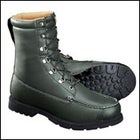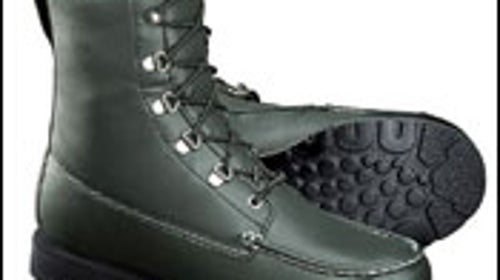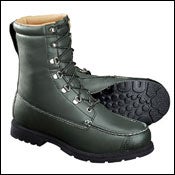It is impossible for me to resist any question that suggests the possibility of poisonous reptiles. And Nicaragua has them. Coral snakes! Rattlesnakes! Even the lovely fer-de-lance!
Cabela’s Kangaroo Featherlight boots
 Kangaroo Featherlight boots
Kangaroo Featherlight bootsOf course, there’s no reason to be alarmist. Snakes, even venomous ones, are like most other creatures on this earth: They hear (or in the snakes’ case, feel—they don’t have ears) you coming, and want to get out of the way. Which is all to the good.
Anyway, basic snake safety starts with leather or other thick-skinned boots that go as high as possible, as the area around your ankle is most vulnerable. IÂ’d give serious consideration to tall hunting-style boots, such as CabelaÂ’s Kangaroo Featherlight boots ($144; www.cabelas.com). TheyÂ’re not insulated and do not have a waterproof liner, which makes them a little cooler. And they put leather protection well over your ankles.
In a more traditional hiking boot, AsoloÂ’s TPS 535 V ($180; www.asolo.com) would be fine, as would the Vasque Wasatch GTX boots ($160; www.vasque.com).
You also can reinforce any pair of boots with several snake-resistant add-ons. Rattlers Knee-Hi Snakeproof Gaiters ($48; www.rattlersbrand.com), for instance, strap onto any good boot and give you bite-proof protection up to your knees. You also can buy full chaps, which extend above the knee. TurtleSkin Snake Armor Chaps ($225; www.turtleskin.com) are a good example.
Good luck!
Get more advice from the Gear Guy as he picks this seasonÂ’s top gifts in YouÂ’ll probably find a few things to put on your own wish list, too.


